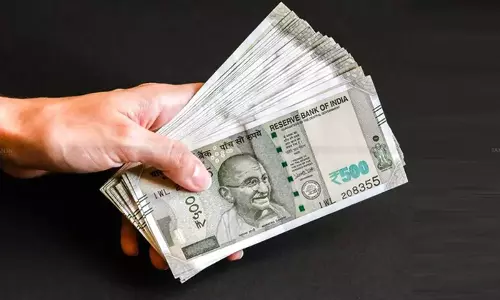House sold for ₹67 lakh but only ₹1,690 shown in ITR: Know how Section 54 exemption helped secure relief [Read Order]
ITAT allows Section 54 exemption and cost of improvement claim in a Rs. 67 lakh house sale case after verifying actual contributions and contractor bills.
![House sold for ₹67 lakh but only ₹1,690 shown in ITR: Know how Section 54 exemption helped secure relief [Read Order] House sold for ₹67 lakh but only ₹1,690 shown in ITR: Know how Section 54 exemption helped secure relief [Read Order]](https://images.taxscan.in/h-upload/2025/09/05/2084199-section-54-exemption-on-house-sale-itat-taxscan.webp)
The Ahmedabad bench of the Income Tax Appellate Tribunal (ITAT) partly allowed the appeal concerning the treatment of capital gains, cost of improvement, and deduction under Section 54 of the Income Tax Act.
Dilip Mohandas Devani, the assessee, sold a house property on January 16, 2012, for Rs. 41,00,151. The stamp duty valuation of the property was Rs. 67,14,284, which the Assessing Officer (AO) adopted as the full value of consideration under Section 50C.
The assessee did not file a return of income for A.Y. 2012–13 but later filed a return during reassessment proceedings, declaring income of Rs. 1,690 and claiming a long-term capital loss of Rs. 8,70,727 after considering the indexed cost of acquisition, cost of improvement, and deduction under Section 54 of the Income Tax Act.
Want a deeper insight into the Income Tax Bill, 2025? Click here
The AO argued that the assessee had incorrectly computed capital gains by taking the sale consideration at Rs. 41,00,151 instead of adopting the stamp duty value. The AO disallowed the assessee’s claim of Rs. 6,00,300 towards the cost of improvement, explaining that it was not supported by banking records or sufficient documentary proof.
The AO also restricted the deduction under Section 54 to 50% of the investment in the new house on the ground that the property was purchased jointly with the assessee’s wife without a clear mention of the ownership share. After adjustments, the AO computed long-term capital gain at Rs. 15,99,618.
On appeal, the Commissioner of Income Tax (Appeals) [CIT(A)] observed that Section 50C required adoption of stamp duty value, upheld the disallowance of cost of improvement, and restricted exemption under Section 54 to half the investment, but recalculated the long-term capital gain at Rs. 9,29,639.
Before the tribunal, the assessee’s counsel argued that the new property was purchased jointly with his wife in the ratio of 2:1, which corresponded to their share of sale proceeds of the old property, including the share of the minor daughter clubbed with the assessee. An affidavit confirming the ratio of contribution was also submitted.
The counsel further argued that the claim for improvement was supported by contractor bills and work details and that expecting banking records for a transaction carried out nearly two decades earlier was unreasonable.
The two-member bench comprising Dr. B.R.R. Kumar (Vice President) and Siddhartha Nautiyal (Judicial Member) observed that the adoption of stamp duty value under Section 50C was in line with the law and found no reason to interfere with the order of the CIT(A).
 Also Read:INR 25 Lakh Cash Contribution by Directors Treated as Unexplained: ITAT Sets Aside CIT(A) Order, Directs Fresh Hearing [Read Order]
Also Read:INR 25 Lakh Cash Contribution by Directors Treated as Unexplained: ITAT Sets Aside CIT(A) Order, Directs Fresh Hearing [Read Order]
Practical Case Studies in Forensic Accounting & Corporate Fraud Investigation - Click Here
Regarding the deduction under Section 54, the tribunal explained that actual contribution toward the new property was relevant. It directed the AO to verify the ratio of 2:1 and grant exemption accordingly.
On the cost of improvement, the tribunal pointed out that since contractor bills and work details were produced, and payments were made long ago in cash, the best available evidence had been provided. The tribunal held that the claim for indexed cost of improvement should be allowed in the interest of justice.
The tribunal partly allowed the appeal for statistical purposes and directed the AO to verify and recompute capital gains based on its observations.
Support our journalism by subscribing to Taxscan premium. Follow us on Telegram for quick updates


